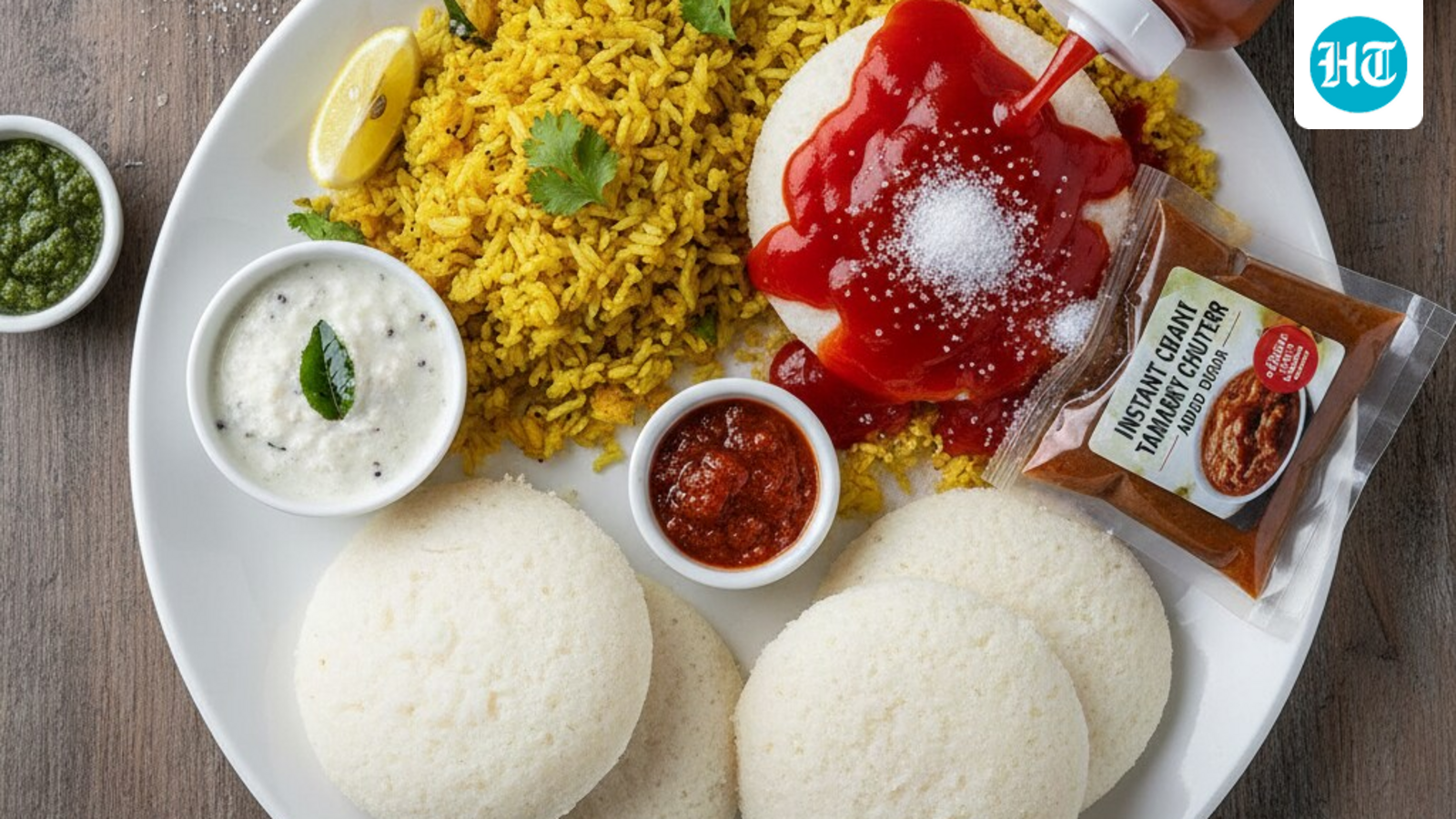Ever wondered why you’re feeling slaky or tired all the time? It might not be just the late nights or early mornings; it could be the hidden sugars in your favourite Indian foods. Also read | Cardiologist shares 5 Indian food habits that could increase your heart attack risk
 Even healthy options like idli or poha can become unhealthy when paired with ketchup or packaged chutneys that have added sugar. (Made using Gemini AI)
Even healthy options like idli or poha can become unhealthy when paired with ketchup or packaged chutneys that have added sugar. (Made using Gemini AI)
In an interview with HT Lifestyle, Dr Saptarshi Bhattacharya, senior consultant, endocrinology, Indraprastha Apollo Hospitals, shared that many common Indian foods are loaded with added sugars that can push your daily intake beyond healthy limits, leading to sugar spikes and long-term risks like diabetes, weight gain, and fatigue
How sugar hides in Indian foods
He said, “When we think of sugar, we usually picture sweets like jalebi, gulab jamun, or laddoo. But sugar is not just in dessert — it quietly hides in many of our everyday Indian foods. From breakfast dishes to snacks and drinks, hidden sugars can easily push your daily intake beyond healthy limits, leading to sudden sugar spikes and long-term risks like diabetes, weight gain, and fatigue.”
According to Dr Bhattacharya, many common foods we eat every day contain more sugar than we realise:
⦿ Breakfast items: “Popular choices like chai with sugar, flavoured cornflakes, or sweetened yoghurt can cause you to start your day with 3–5 teaspoons of sugar. Even idli or poha become a problem when paired with ketchup or packaged chutneys that contain added sugar,” Dr Bhattacharya said.
⦿ Snacks: “Packaged namkeens, biscuits, instant noodles, and bakery items like pav or buns often contain refined sugar to enhance flavour and shelf life,” he added.
⦿ Indian gravies: “Many restaurant-style curries and sauces — like butter chicken, paneer butter masala, or korma — use tomato ketchup, cream, or sweetened pastes that add hidden sugar,” he shared
⦿ Drinks: Soft drinks, bottled fruit juices, milkshakes, energy drinks, and even ‘healthy’ packaged lassi or flavoured milk can contain 5-8 teaspoons or 20-30 gm of sugar per serving, as per Dr Bhattacharya.
⦿ Street food: “Chaats, samosa chole, and pani puri often use sweet chutneys and syrups. Over time, these sugars add up and cause chronic calorie surplus that results in fat deposition and obesity,” he added.
 Eating too much hidden sugar can cause your blood sugar to spike, increasing the risk of diabetes, belly fat, heart disease, and inflammation. (Made using Gemini AI) What hidden sugars do to your body
Eating too much hidden sugar can cause your blood sugar to spike, increasing the risk of diabetes, belly fat, heart disease, and inflammation. (Made using Gemini AI) What hidden sugars do to your body
Consuming high amounts of hidden sugars can lead to a rapid rise in blood glucose levels, insulin resistance and type 2 diabetes, and belly fat, heart disease, and inflammation. “Hidden sugars cause a rapid rise in blood glucose levels, followed by a sudden drop that leaves you tired and craving more sugar. Over time, this cycle increases the risk of insulin resistance and type 2 diabetes. Even if you’re not diabetic, excess sugar contributes to belly fat, heart disease, and inflammation,” Dr Bhattacharya said.
How to cut down on hidden sugar
According to Dr Bhattacharya, you don’t have to give up your favourite foods — just make small, mindful changes. Here is what he suggested:
⦿ Read labels carefully: Packaged foods often list sugar under names like sucrose, glucose syrup, maltose, or dextrose. The shorter the ingredient list, the better.
⦿ Limit sweetened beverages: Replace bottled drinks with fresh nimbu pani (lemon water), unsweetened coconut water, or herbal teas.
Cook at home: When you prepare your own gravies, you can skip the ketchup or cream and use fresh tomato puree, yoghurt, or nuts for texture.
⦿ Balance your meals: Combine carb-heavy dishes like rice, poha, or chapati with fibre and protein—like vegetables, lentils, or paneer — to slow sugar absorption.
⦿ Watch portion sizes: Even traditional sweets can be enjoyed occasionally—just limit to small portions and eat them after a balanced meal, not on an empty stomach.
Dr Bhattacharya concluded: “The key isn’t to stop enjoying Indian food — it’s to make it smarter. Choose fresh ingredients, reduce packaged and restaurant meals, and be conscious of how sugar sneaks into your plate. When you take control of what goes into your food, you protect your energy levels, your blood sugar, and your long-term health — one mindful bite at a time.”
Note to readers: This article is for informational purposes only and not a substitute for professional medical advice. Always seek the advice of your doctor with any questions about a medical condition.

